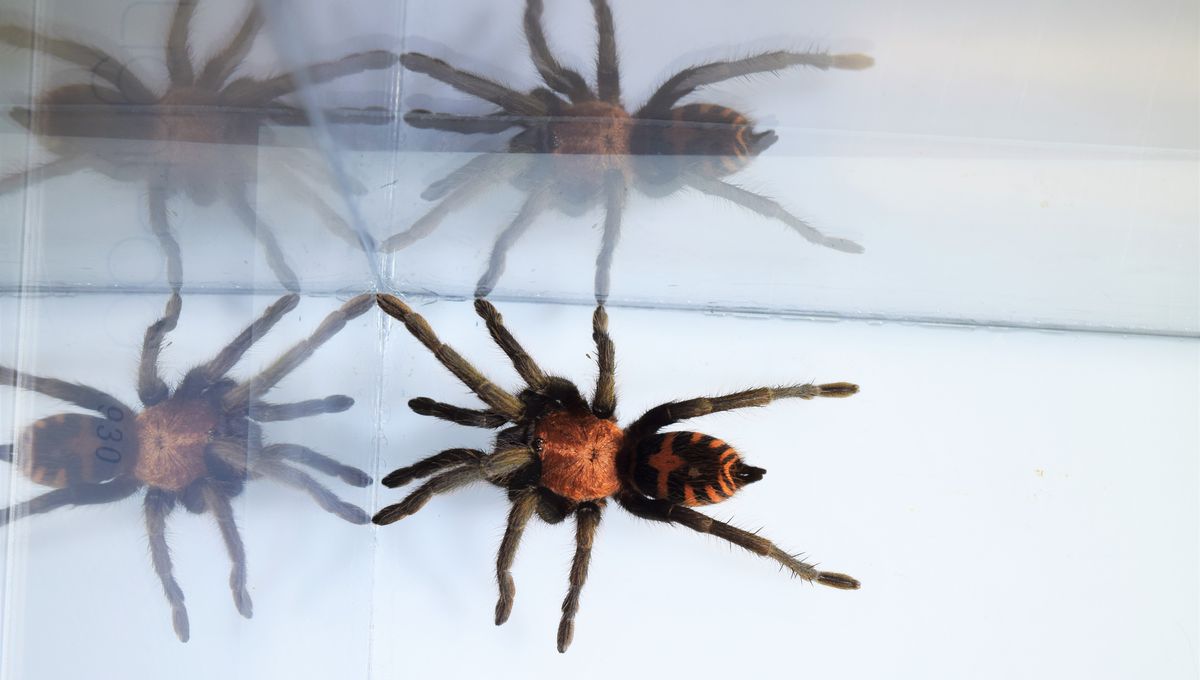
Spiders are fascinating for a great number of reasons but one of the most obvious is how they manage to scuttle around on all eight limbs. Some spiders have even developed the adaptation known as autotomy, to lose limbs in an altercation with a predator, but not have it be the end of them. Now, researchers are looking at just how mobile a spider can be without two of its limbs.
Guatemalan tiger rump tarantulas (Davus pentaloris) were chosen because they are fast runners and can regrow limbs within one to two months. To compare how the spiders run, the team first recorded them running with all eight legs with a high-speed video camera. Then they recorded them running immediately after they had lost two legs, and then again, one day after the loss of two legs. The legs that were removed were chosen to cause maximum disturbance to the gait, as well as being the legs that are most frequently lost in predator interaction in the wild. After the spider had grown back its legs, the same sequence of experiments was carried out again.
This left the team with more than 43,000 movie frames and 800 strides to look into to find out what was happening to the spider’s gait. Were they moving as quickly as they had before they lost their limbs? To analyze the footage and the movement patterns, the team turned to machine learning and physicists Suzanne Amador and Kris Wu of Haverford College, USA, to figure out what was happening.
“Suzanne is an incredible out-of-the-box thinker,” study author Tonia Hsieh said of the approach in a statement. “I don’t know of anyone else who could have come up with the novel approach for this analysis and then written up code to execute it.”
The results showed that the tarantulas could run just as fast as they had before they lost their limbs. The footage showed that the tarantulas compensated for the gaps where their legs had been by spreading their remaining limbs a little wider and twisting their bodies.
The team also learnt that the spiders seemed to favor their hind limbs when running, when they were down to just six legs. “Juvenile tarantulas that had never experienced autotomy were found to achieve a stable gait immediately after 25% leg loss and to resume their pre-autotomy speed within one day,” explain the authors in their paper.
The team thinks this ability to adapt so fast to the loss of a limb can help spiders in the wild when moving over uneven ground, or even allow them flexibility in using only some legs for running while sensing with the others. The authors note that this work could help inform robotics and could be useful in designing robots that correct their movements after suffering damage.
The paper is published in the Journal of Experimental Biology.
Source Link: Losing Two Legs Doesn’t Slow Tarantulas Down Or Make Them More Unstable